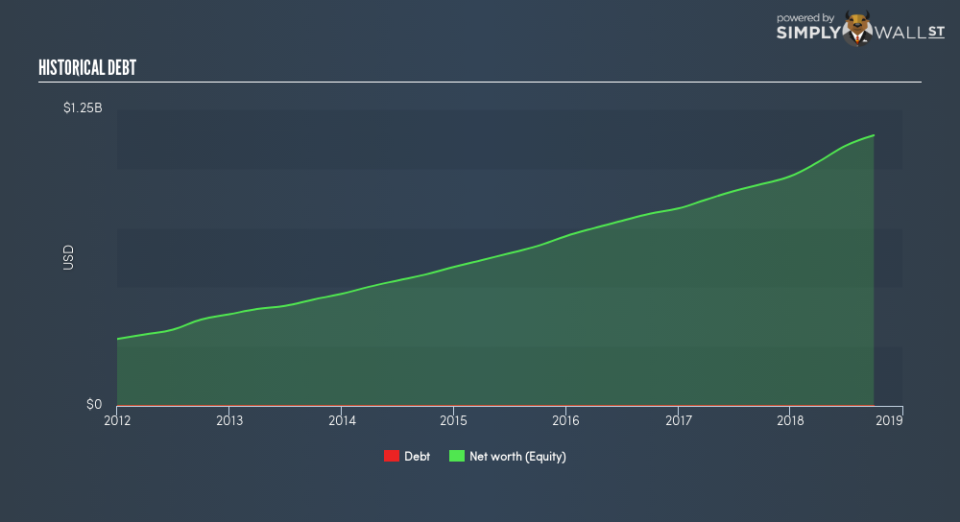Why Globus Medical, Inc. (NYSE:GMED) Is A Financially Healthy Company

Mid-caps stocks, like Globus Medical, Inc. (NYSE:GMED) with a market capitalization of US$4.4b, aren’t the focus of most investors who prefer to direct their investments towards either large-cap or small-cap stocks. Despite this, commonly overlooked mid-caps have historically produced better risk-adjusted returns than their small and large-cap counterparts. Let’s take a look at GMED’s debt concentration and assess their financial liquidity to get an idea of their ability to fund strategic acquisitions and grow through cyclical pressures. Note that this commentary is very high-level and solely focused on financial health, so I suggest you dig deeper yourself into GMED here.
See our latest analysis for Globus Medical
Can GMED service its debt comfortably?
What is considered a high debt-to-equity ratio differs depending on the industry, because some industries tend to utilize more debt financing than others. Generally, mid-cap stocks are considered financially healthy if its ratio is below 40%. For GMED, the debt-to-equity ratio is zero, meaning that the company has no debt. It has been operating its business with zero debt and utilising only its equity capital. Investors’ risk associated with debt is virtually non-existent with GMED, and the company has plenty of headroom and ability to raise debt should it need to in the future.
Can GMED meet its short-term obligations with the cash in hand?
Given zero long-term debt on its balance sheet, Globus Medical has no solvency issues, which is used to describe the company’s ability to meet its long-term obligations. However, another measure of financial health is its short-term obligations, which is known as liquidity. These include payments to suppliers, employees and other stakeholders. Looking at GMED’s US$82m in current liabilities, the company has maintained a safe level of current assets to meet its obligations, with the current ratio last standing at 7.91x. However, a ratio above 3x may be considered excessive by some investors, yet this is not usually a major negative for a company.
Next Steps:
GMED has no debt in addition to ample cash to cover its short-term commitments. Its safe operations reduces risk for the company and shareholders, but some level of debt could also boost earnings growth and operational efficiency. Keep in mind I haven’t considered other factors such as how GMED has performed in the past. You should continue to research Globus Medical to get a more holistic view of the stock by looking at:
Future Outlook: What are well-informed industry analysts predicting for GMED’s future growth? Take a look at our free research report of analyst consensus for GMED’s outlook.
Valuation: What is GMED worth today? Is the stock undervalued, even when its growth outlook is factored into its intrinsic value? The intrinsic value infographic in our free research report helps visualize whether GMED is currently mispriced by the market.
Other High-Performing Stocks: Are there other stocks that provide better prospects with proven track records? Explore our free list of these great stocks here.
To help readers see past the short term volatility of the financial market, we aim to bring you a long-term focused research analysis purely driven by fundamental data. Note that our analysis does not factor in the latest price-sensitive company announcements.
The author is an independent contributor and at the time of publication had no position in the stocks mentioned. For errors that warrant correction please contact the editor at editorial-team@simplywallst.com.

